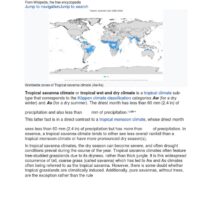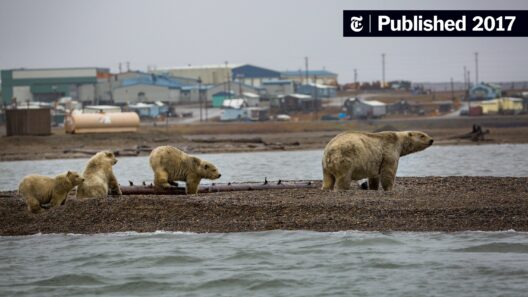The world is akin to a massive, intricate clockwork mechanism, where every cog and gear complements the others in a harmony of motion. When one element, such as climate, begins to falter, it can reverberate throughout the entire system, disrupting balance and unleashing a cascade of events. One particularly alarming manifestation of this imbalance is the increasing intensity and frequency of typhoons due to global warming. Understanding the nexus between climactic alterations and these ferocious storms provides critical insight into the impending challenges humanity faces.
Typhoons are birthed from the warm embrace of ocean waters, where temperatures reach a threshold that ignites the process of formation. As the earth’s atmosphere warms—driven inexorably by the relentless greenhouse gas emissions—it induces a corresponding rise in sea surface temperatures. This phenomenon is analogous to a kettle on a stove; as heat accumulates, pressure builds, and when the conditions are just right, a violent outburst occurs. In the case of typhoons, that outburst manifests in the form of destructive winds, torrential rains, and catastrophic storm surges.
To understand how climate change fuels typhoons, one must first grasp the mechanics of their development. Typhoons initiate from disturbances in the atmosphere known as tropical depressions. These disturbances thrive over warm waters, where moisture is abundant. The warmth, now enhanced by climate change, acts as a catalyst, allowing these systems to gather strength far more rapidly than in previous decades. Esteemed climatologists have observed a direct correlation between elevated sea temperatures and the increased energy available to tropical cyclones. This, in essence, transforms the oceans into a vast reservoir, feeding the insatiable hunger of these storms.
The impacts of global warming stretch beyond merely heightened wind speeds. They also exacerbate the precipitation associated with these storms. A warmer atmosphere holds more moisture, akin to a sponge nearing saturation. Consequently, when typhoons do occur, they unleash torrential rain, leading to flooding that devastates communities, infrastructure, and ecosystems. Researchers estimate that for every degree Celsius rise in temperature, the capacity of the atmosphere to hold moisture increases by approximately 7%, culminating in unprecedented rainfall during storms. The diabolical irony is that while climate change incites these changes, the resultant storms further contribute to its trajectory, as the flooding and destruction exacerbate carbon emissions from damaged areas.
Moreover, the statistical patterns of typhoons reveal a troubling trend. Regions previously unacquainted with such violent storms now find themselves within the crosshairs of their wrath. This includes vulnerable coastal communities in Southeast Asia, where socioeconomic structures are often ill-equipped to withstand such assaults. Just as the ancient mariner navigated treacherous seas, today’s inhabitants must confront a new maritime reality fraught with peril. The storms that churn from the ocean now carry with them a torrential burden of displaced lives and battered economies.
It is crucial to recognize that not all typhoons are created equal. The phenomenon of rapid intensification, where a storm can escalate from a mere tropical depression to a category five typhoon within a matter of hours, has become more prevalent as the climate changes. This rapid transformation is akin to a dragon awakening from slumber, swiftly transforming into an unstoppable behemoth. Forecasters, who once operated with a modicum of predictability, find their models increasingly challenged by this new reality, complicating preparedness efforts and endangering lives.
Furthermore, the ramifications of these amplified storms extend beyond immediate destruction. The aftermath of a typhoon often compels nations to reckon with long-term ecological consequences. Mangroves, coral reefs, and coastal habitats suffer from the dual onslaught of intense waves and artificial interventions such as seawalls which serve to protect human life but can ultimately disrupt natural processes. In this context, humanity often finds itself in a precarious dance, attempting to outmaneuver nature while unwittingly contributing to the destruction of its own life-sustaining ecosystems.
Consequently, it is imperative to harness knowledge and technology in mitigating the impact of typhoons fueled by climate change. This encompasses enhancing forecasting models to account for the unique intensity patterns emerging in storms, improving communication networks to disseminate timely warnings, and investing in resilient infrastructure designed to withstand the onslaught of nature’s fury. Concurrently, global initiatives aimed at reducing greenhouse gas emissions must be pursued with vigor. The sands of time are slipping through the hourglass, and without a concerted effort to address the root causes of climate change, humanity risks surrendering to an increasingly volatile future.
Education plays a pivotal role in fostering a deeper understanding among communities about typhoons and their association with climate change. Through awareness campaigns, local populations can be equipped with the knowledge necessary for resilience. As we delve deeper into the intricacies of this relationship, it becomes evident that the path forward must be paved with collaboration—local, national, and international. The embodiment of global stewardship is essential to ensuring that vulnerable regions are shielded from the escalating tides of destruction.
In conclusion, typhoons are no longer isolated mercurial events; they are symptomatic of a larger malady afflicting our planet. As the earth continues to warm, so shall the storms that rage upon its surface. The time for passive observation is over; action is the imperative. Humanity must adopt an integrated approach to mitigate these climactic threats and embrace a future where resilience, sustainable practices, and global cooperation form the cornerstones of our fight against climate change. Just as a clock demands the synchronization of its parts to function seamlessly, so too must humanity come together to confront the crisis at hand.






